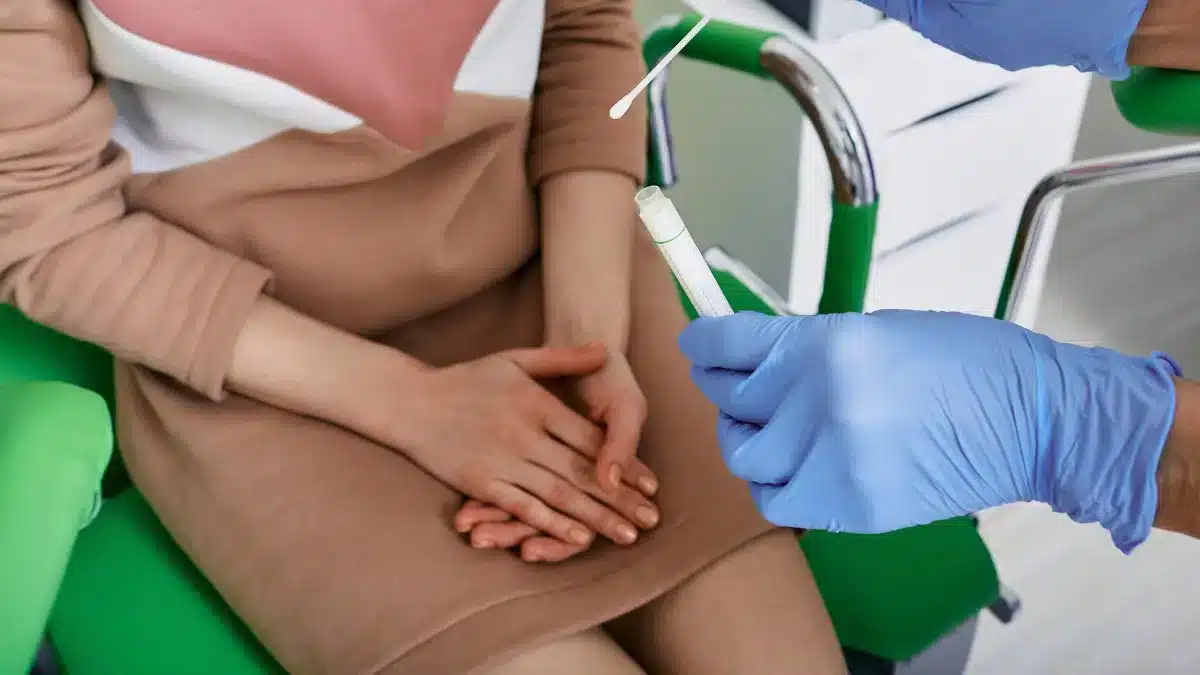Trichomoniasis in Women: Symptoms, Causes, and Treatment
Trichomoniasis, also known by the name Trich, is a Sexually Transmitted Infection (STI).
According to WHO, in 2020, 73.7 million women reported Trichomonas vaginalis infection.
Not only are the numbers big, but so are the complications if Trichomoniasis is not treated.
Fortunately, if diagnosed and treated on time, Trichomoniasis in women is curable.
To keep it under check, it is crucial to have knowledge about its symptoms, causes, and treatment.
So, this article unfolds the details about Trichomoniasis in women, presenting a comprehensive guide along with recent studies, answering all possible questions that arise when discussing this STI.
What is Trichomoniasis
Trichomoniasis is a Sexually Transmitted Infection (STI). The cause of this infection is a protozoan called Trichomonas vaginalis.
This parasite uses a process called binary fission. It multiplies in the host body by splitting into two daughter cells, spreading the infection.
Trichomonas vaginalis attacks the lower genital tracts in females, and it does not flourish well in the external environment.
In women, the condition can be asymptomatic or symptomatic. Mostly, the women will see symptoms in 5 to 28 days of getting infected.
Symptoms of Trichomoniasis in women

Compared to men, women are more likely to have symptoms when infected by Trichomoniasis.
According to statistics, 50 percent of infected women experience no symptoms, while the other half do.
Some of the symptoms seen are:
- Thick or thin vaginal discharge of yellow-green color
- Unpleasant smell from the vaginal discharge
- Increased discharge more than normal
- Itching or burning in the genitals
- Pain while urinating
- Soreness or redness in or around the genital area
- Painful sex
What causes Trichomoniasis in women
Trichomoniasis transmission in women occurs primarily via sexual contact during oral, anal, and vaginal sex with an infected partner.
The protozoan can also be present in the semen of males, which can transmit the infection.
However, ejaculation is not necessary for Trichomoniasis to spread.
Having unprotected sex offers direct genital contact, which is enough to transmit the infection.
Women having sex with women can also get the infection from vaginal fluids as they offer a breeding ground for Trichomonas vaginalis.
Even when sharing sex toys with an infected person without cleaning them or using protection, the infection can pass on.
Besides the common sexual transmission, non-sexual transmission methods are also noted.
Indirect contact with the virus through shared towels with an infected person, common bath water, swimming pools, and toilet seats are a few such instances.
In rare cases, a mother can pass on Trichomoniasis to their child through the birth canal.
So, to avoid most of the above-stated transmission methods, one must:
- use protection while having sex
- limit the number of sexual partners
- avoid sexual contact with an infected person.
Trichomoniasis testing in women
Before performing any test, a doctor will begin with a physical examination of the pelvic area.
After this, they may ask about the symptoms, abnormalities, difficulties faced, and the duration of the condition.
Based on this, the following tests can be performed after taking a swab of the cervix/ vagina or urine sample:
- Wet mount microscopy: This test requires a sample of the vaginal discharge, which is viewed under a microscope to look for Trichomonas vaginalis parasite. It requires a time of 1-2 days
- Nucleic Acid Amplification Testing: Also known as NAAT, this test checks for DNA or RNA of the parasite through a urine sample or swab of fluids from the cervix or vagina. The test results can take a few hours or a day to come
- Culture: This test involves taking a swab of vaginal fluid and attempting to grow Trichomonas from the sample to detect the infection. This process can take 3-7 days
- Rapid antigen testing: This is a quick test to detect the infection in women through vaginal fluid. This test looks for antigens, which are proteins that trigger the immune system to react against the parasite. It takes about 15 minutes to get the results of this test
Trichomoniasis treatment for women

Trichomoniasis in women is treated by medications.
It is easy to treat with antibiotics within a short span of a week.
The first recommended medicine for treating the infection in women is Metronidazole. A single 2-gram dose of the medicine is used for treatment.
Sometimes 500 mg doses of Metronidazole twice a day for a week are also recommended as it is more effective.
In case of treatment failure but no reexposure to an infected person, a 2-gram dose of Metronidazole is given daily for seven days.
The alternative to Metronidazole treatment is a single 2-gram dose of Tinidazole.
A single 2-gram dose of Tinidazole is considered more effective than a single 2-gram dose of Metronidazole. However, a 7-day Metronidazole treatment is more effective.
Conclusion
Trichomoniasis is an STI caused by protozoan Trichomonas vaginalis, which affects women worldwide.
Infected women can observe symptoms like increased discharge, burning sensation or pain during urination, redness or soreness in the genital area, and painful sex.
As these symptoms are common for numerous issues, tests like rapid antigen test, NAAT, culture test, and wet mount microscopy can confirm Trichomoniasis.
Antibiotics Metronidazole and Tinidazole are used to treat this STI and clear the infection within a week. Sometimes, longer treatment may be needed.
For increased safety, preventive measures like the use of condoms while having sex, not sharing towels or toilets, and avoiding indulging in sex with an infected person should be practiced.
Frequently Asked Questions
What are the first signs of Trichomoniasis in females?
Females are likely to experience symptoms like pain while urinating, abnormal vaginal discharge, unpleasant smell and irritation in the vagina, painful sex, soreness and redness around the genital area. However, these symptoms are common for several medical issues. So, getting tested for Trichomoniasis is vital before coming to a conclusion.
How long can a woman have Trichomoniasis without knowing?
In women, symptoms like itching in the genital area, soreness, burning sensation while peeing, and painful intercourse can be observed in 5 to 28 days. However, half of the women can have few or no noticeable symptoms for months or years.
Does Trichomoniasis go away in women?
Trichomoniasis is a curable STI if the needed treatment is followed. Antibiotics like Metronidazole and Tinidazole are used for a week or more, if needed, to treat trich in women. However, when Trichomoniasis is not treated, it can last for years. It does not go away by itself.
Why do black women get Trichomoniasis?
Studies have shown that black women are experiencing an elevation in the Trichomoniasis infection rate. Responsible factors being considered are lack of protection usage during sex, douching, difficult access to healthcare, and choosing partners with high intoxication, which leads to risky sexual encounters without protection passing on STIs.
Can a girl get Trich on her own?
Trichomoniasis is primarily spread through sexual contact, but it is possible to acquire the infection through non-sexual means. Sharing towels with an infected person, toilet seats, and swimming pools are indirect ways to contract the parasite. So, a girl can get Trich on her own by such indirect means.
WowRx uses only high-quality sources while writing our articles. Please read our content information policy to know more about how we keep our content reliable and trustworthy.






